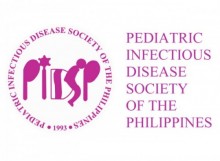Journal 2018 Vol.19 No.1
Granulocyte Colony Stimulating Factor in Improving Outcomes of Neonatal Sepsis: A Meta-Analysis
Grazielle S. Verzosa, M.D., Mary Mae Catherine N. Yu, M.D., Kathlynne Anne Abat-Senen, M.D.,Maria Isabel O. Quilendrino, M.D.
Abstract
Background: Neonatal sepsis complicated with neutropenia increases risk of mortality by 50%. The immature neutrophil production of neonates is often overwhelmed by severe infection. Granulocyte colony stimulating factor (G-CSF), a naturally occurring cytokine used to support neutrophil recovery during chemotherapy, is a possible treatment that can improve outcomes of neonatal sepsis.
Objectives: To determine the efficacy of G-CSF in decreasing mortality and morbidity in septic neonates.
Methodology: Electronic searches were conducted on online journal databases. Unpublished or ongoing studies ere sought in training institutions accredited by the Philippine Pediatric Society. The investigators included randomized control trials using G-CSF on septic neonates.
Results: Twenty-two trials were identified and thirteen were assessed to be eligible for review. The studies had a total of 530 participants, with the largest having 78 subjects. Relative risks (RR), mean differences (MD) and standard mean differences (SMD) with 95% confidence intervals (CI) using the fixed effect model and random effects model were reported in the results. There was a significant decrease in mortality (RR 0.69, 95% CI 0.48 to 0.99) with a greater reduction for preterm neonates, low birth weight neonates and neutropenic neonates. There was no significant reduction in morbidities caused by neonatal sepsis.
Conclusions: There is moderate quality evidence that suggests that G-CSF as an adjunct treatment for neonatal sepsis significantly decreases mortality with greater benefit to preterm neonates, low birth weight neonates and those with baseline neutropenia. The studies did not show any benefit in reducing sepsis-related morbidity.
Keywords: granulocyte colony stimulating factor, neonatal sepsis, neutropenia
https://doi.org/10.56964/pidspj20181901007
| View Full Article in PDF format |
Journal 2018 Vol.19 No.1 Original Articles 5pidsp@uplink.com.ph2022-12-10T08:34:13+00:00
